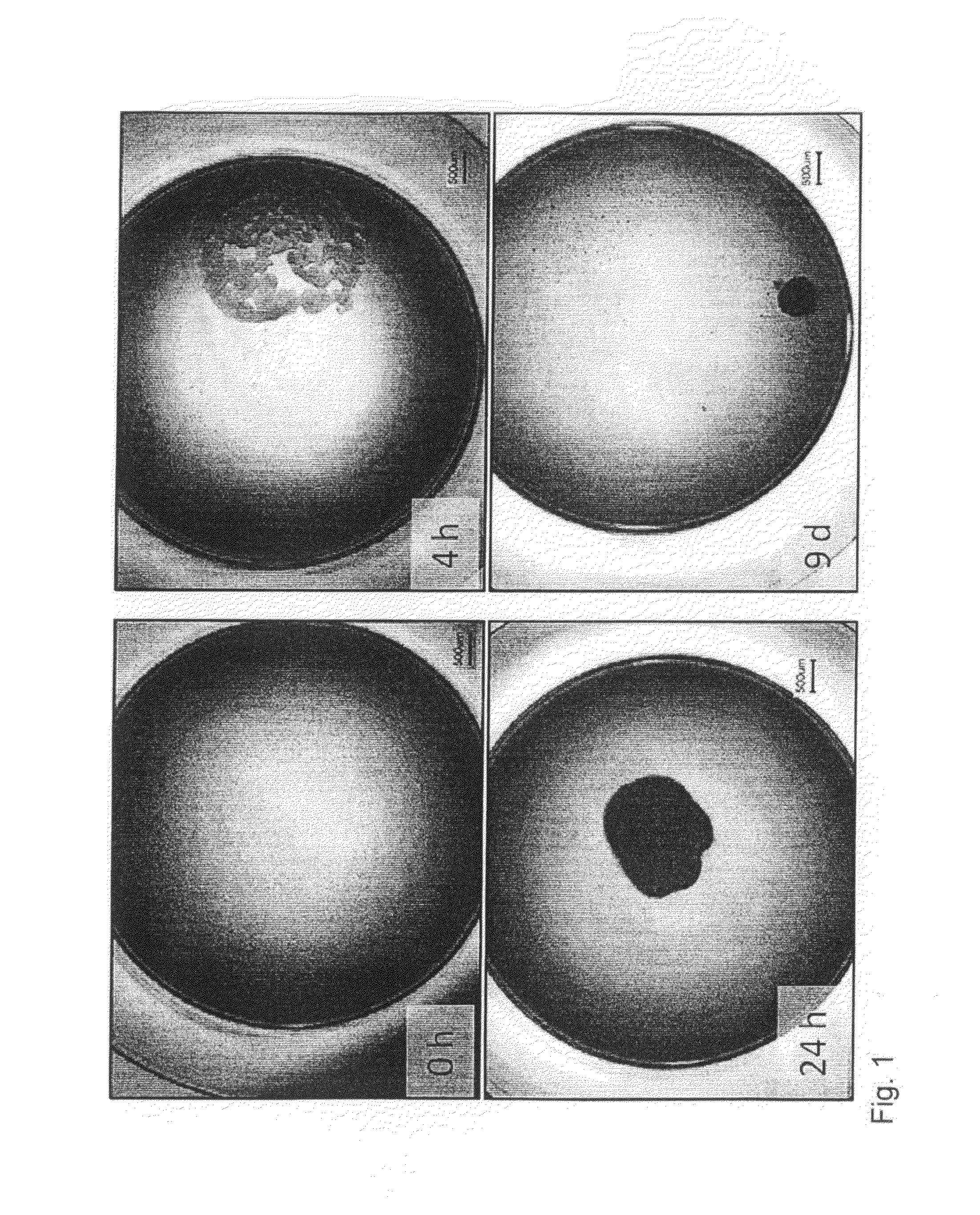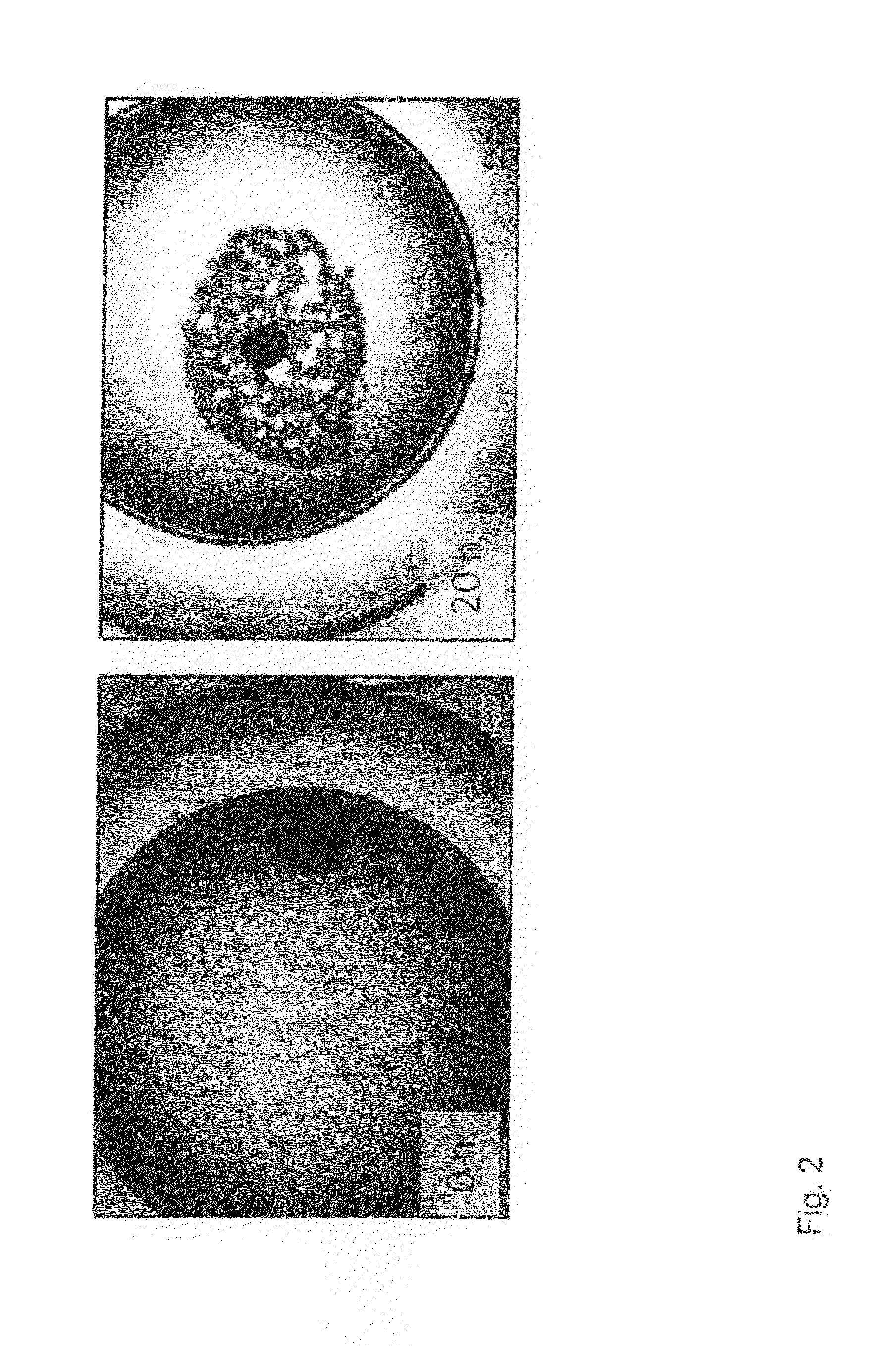Method of preparing an artificial tooth primordium in vitro and artificialtooth primordium derived therefrom
- Summary
- Abstract
- Description
- Claims
- Application Information
AI Technical Summary
Benefits of technology
Problems solved by technology
Method used
Image
Examples
Embodiment Construction
[0055]General Methods
[0056]Mesenchymal Dental Pulp Cell Isolation
[0057]Dental pulp cell isolation is performed according to a modified protocol from Gronthos et al. (A method to isolate and culture expand human dental pulp stem cells. Methods Mol Biol. 2011; 698:107-21).[0058]1 Extracted third molars from patients after informed consent are collected in DMEM containing 10% FCS and penicillin and streptomycin (100 μg / ml each) and stored at 4° C. for not longer than 24 hours.[0059]2 The biopsies are handled under sterile conditions throughout the whole procedure of cell extraction. Tooth crown and the root if present are wiped with 100% ethanol. To open the pulpal cavity, the tooth is split by mechanical cracking with a hammer.[0060]3 Pulp tissue is removed with forceps and placed into a PBS containing petri dish.[0061]4 The tissue is then cut into small fragment which are then washed twice with PBS to remove debris and blood.[0062]5 Afterwards a digestion step is performed with a col...
PUM
| Property | Measurement | Unit |
|---|---|---|
| Time | aaaaa | aaaaa |
| Diameter | aaaaa | aaaaa |
| Diameter | aaaaa | aaaaa |
Abstract
Description
Claims
Application Information
 Login to View More
Login to View More - Generate Ideas
- Intellectual Property
- Life Sciences
- Materials
- Tech Scout
- Unparalleled Data Quality
- Higher Quality Content
- 60% Fewer Hallucinations
Browse by: Latest US Patents, China's latest patents, Technical Efficacy Thesaurus, Application Domain, Technology Topic, Popular Technical Reports.
© 2025 PatSnap. All rights reserved.Legal|Privacy policy|Modern Slavery Act Transparency Statement|Sitemap|About US| Contact US: help@patsnap.com



